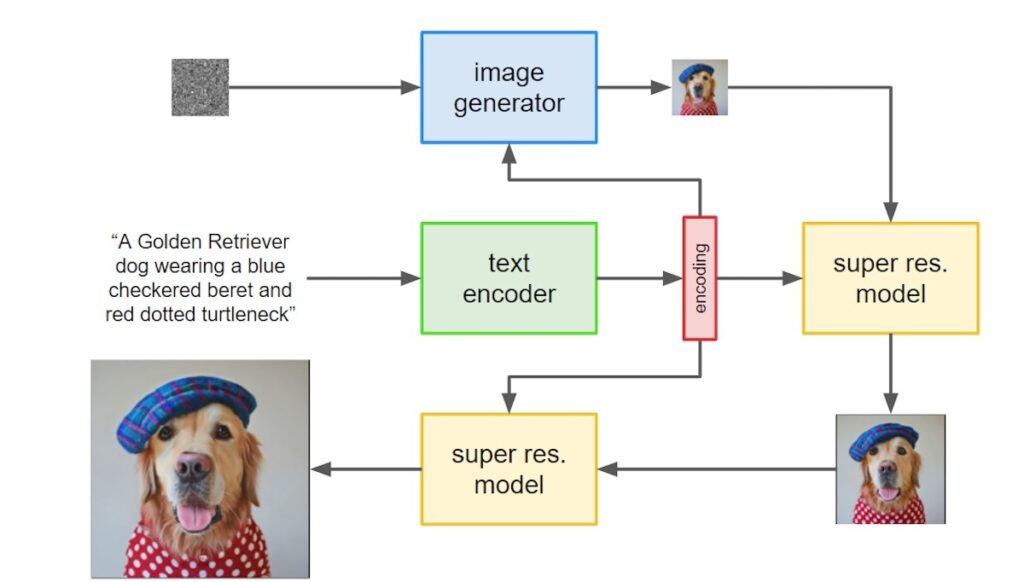Stable Diffusion in Image Processing: Enhancing Signal Processing Techniques

In the realm of digital imaging, the pursuit of enhancing visual quality has been an enduring endeavor. From the grainy beginnings of photography to the high-definition marvels of modern technology, the quest for sharper, clearer, and more detailed images has driven innovation and transformed our perception of the world around us. Among the techniques that have fueled this advancement are stable diffusion and enhancing signal processing techniques.
A Detailed Exploration of Stable Diffusion
Stable diffusion is a mathematical model that mimics heat flow. And it effectively removes noise from images without compromising their integrity. It achieves this remarkable feat by simulating the diffusion of heat, which gradually spreads throughout a material. As a result, it has a smoother and more visually appealing outcome. By applying stable diffusion techniques, one can enhance image quality and extract valuable information with greater clarity.
Step-by-Step Explanation of Stable Diffusion
Image Preparation
The process commences with the acquisition of the image to be processed. This image can be obtained from various sources. It includes digital cameras, scanners, or medical imaging devices.
Noise Identification
The next step involves identifying the noise present in the image. Noise can manifest in various forms, including random fluctuations in pixel values, graininess, or speckles.
Diffusion Process
The core of stable diffusion lies in the diffusion process, which emulates the behavior of heat diffusion. During this process, the algorithm gradually diffuses pixel values throughout the image. Also, it effectively smoothing out noise while preserving edges and other important features.
Parameter Adjustment
To achieve optimal results, the diffusion process is guided by parameters that control the extent of diffusion. These parameters are carefully adjusted to strike a balance between noise reduction and feature preservation.
Output Generation
The final step involves generating the denoised image, which represents the refined version of the original image. This enhanced image exhibits reduced noise levels improved visual quality and preserved edges and textures.

Enhancing Signal Processing Techniques
Enhancing signal processing involves a set of methods aimed at improving the quality, interpretability, or extraction of useful information from signals. This encompasses various techniques such as filtering, feature extraction, noise reduction, and signal enhancement.
Usage and Application
Signal processing techniques are ubiquitous across multiple domains, including telecommunications, audio processing, biomedical signal analysis, etc. They are used for tasks like denoising signals, extracting relevant features, pattern recognition, and improving signal-to-noise ratio.
Use Cases:
– Noise Reduction: Eliminating unwanted noise to enhance the clarity of signals.
– Feature Extraction: Identifying and extracting essential characteristics or patterns from signals.
– Signal Enhancement: Amplifying or improving specific aspects of signals for better analysis or interpretation.
Limitations:
– Assumptions and Models: Signal processing techniques often rely on assumptions about the signal’s characteristics, and deviations from these assumptions can affect their performance.
– Complexity and Trade-offs:Balancing between noise reduction, feature preservation, and computational complexity can be challenging.
Advantages:
– Improved Interpretability: Enhancing signals aids in better understanding and analysis.
– Better Signal-to-Noise Ratio: Reduction of noise enhances the quality and reliability of signals.

Stable diffusion and signal processing techniques
Unified Noise Reduction
Both methodologies, stable diffusion in images and signal processing techniques, converge in their pursuit of noise reduction. Stable diffusion refines images by intelligently smoothing pixel values while retaining critical edges and textures, reducing visual noise. Similarly, signal processing techniques meticulously filter unwanted noise from signals, heightening their clarity and credibility.
Information Preservation
Both paradigms are deeply committed to preserving essential information within their respective domains. Stable diffusion ensures the safeguarding of crucial structural details within images despite noise reduction efforts. Likewise, signal processing techniques uphold vital features and patterns within signals while eliminating interference.
Adaptability and Flexibility.
Both fields showcase remarkable adaptability. Stable diffusion algorithms exhibit versatility in adjusting to diverse image types and noise characteristics, akin to the adaptability of signal processing techniques tailored to the specific traits and nuances of various signal types.
Expansive Applications
Their combined influence reverberates across numerous disciplines. In medical imaging, stable diffusion enhances MRI images, mitigating noise while preserving crucial anatomical structures. Concurrently, signal processing techniques refine biomedical signals such as ECGs or EEGs, contributing to accurate diagnoses and assessments.
Impactful Synergy
Elevated Data Quality
The fusion of stable diffusion and signal processing techniques amplifies their individual strengths, culminating in data of superior quality. This enhanced data reliability serves as a cornerstone for meticulous analysis and interpretation.
Precision in Analysis
Cleaner images and pristine signals facilitate meticulous analysis and interpretation, empowering informed decisions and groundbreaking discoveries across diverse domains, spanning scientific research to practical engineering applications.
Cross-Domain Significance
The amalgamation of these methodologies transcends disciplinary boundaries. Their collective impact spans across fields like medical imaging, telecommunications, environmental sciences, and beyond, where pristine images and signals form the bedrock of accurate analysis and decisive action.
Conclusion
Stable diffusion in image processing and enhancing signal processing techniques are integral components in improving the quality and interpretability of images and signals. Stable diffusion, with its focus on noise reduction while preserving details, is vital in applications where maintaining edge sharpness is crucial. Meanwhile, signal processing techniques offer a wide array of tools for analyzing, filtering, and enhancing signals across various domains, contributing to clearer and more informative data.
Both areas have their strengths and limitations, but their combined use significantly impacts fields like medical imaging, telecommunications, and scientific research by enabling better analysis, interpretation, and understanding of data.
Find out more on the BugendaiTech channel: bugendaitech.com





